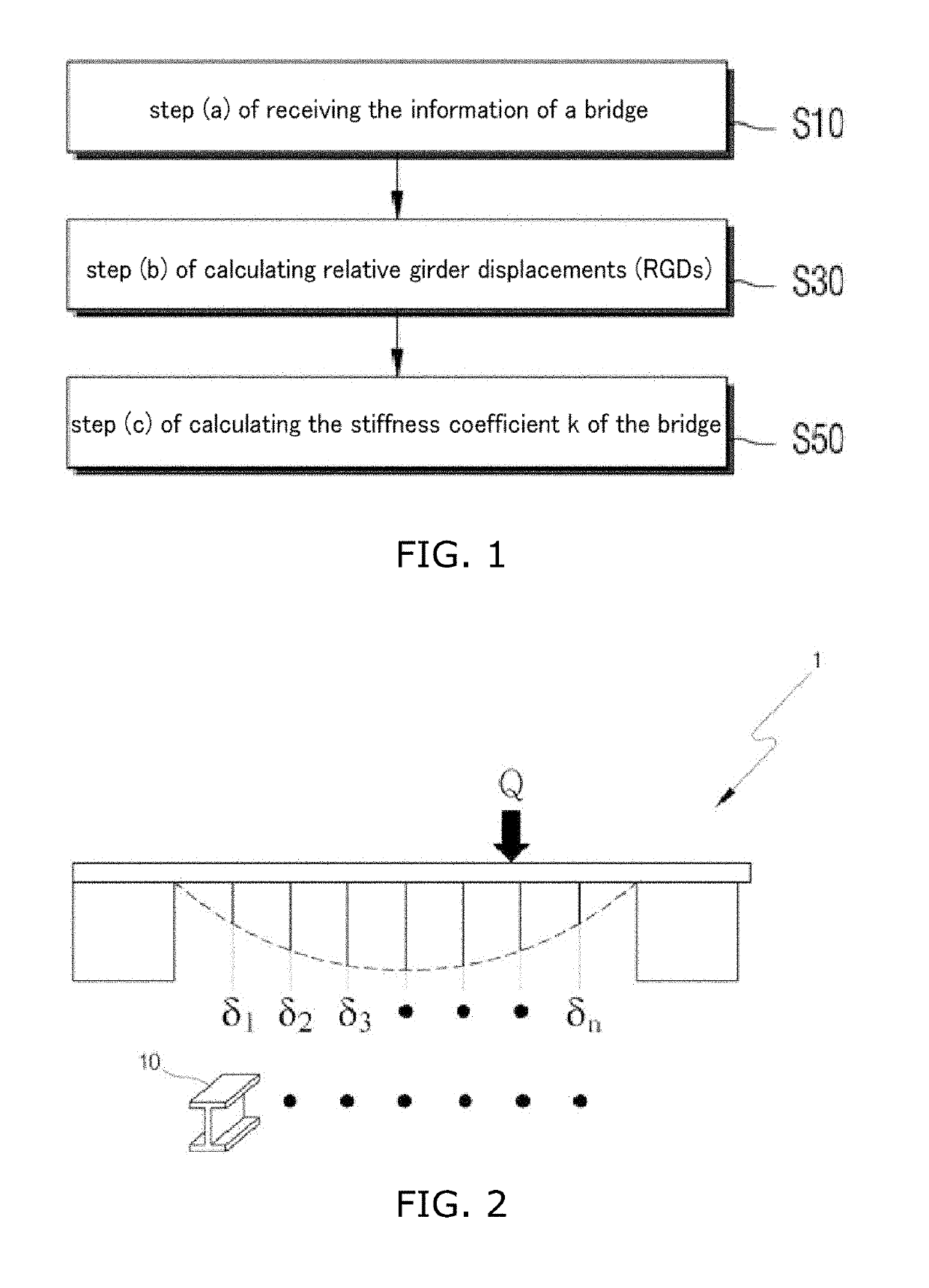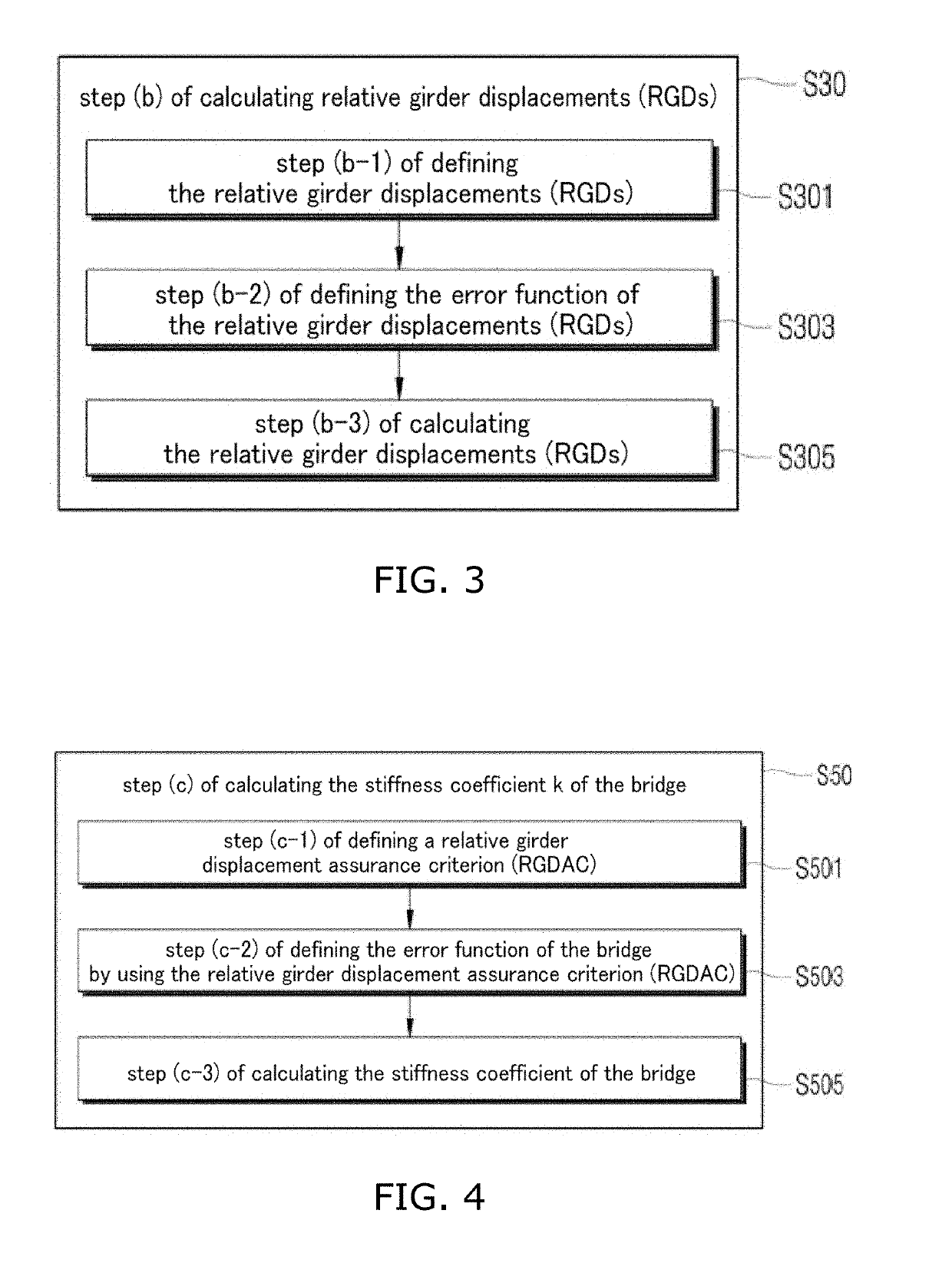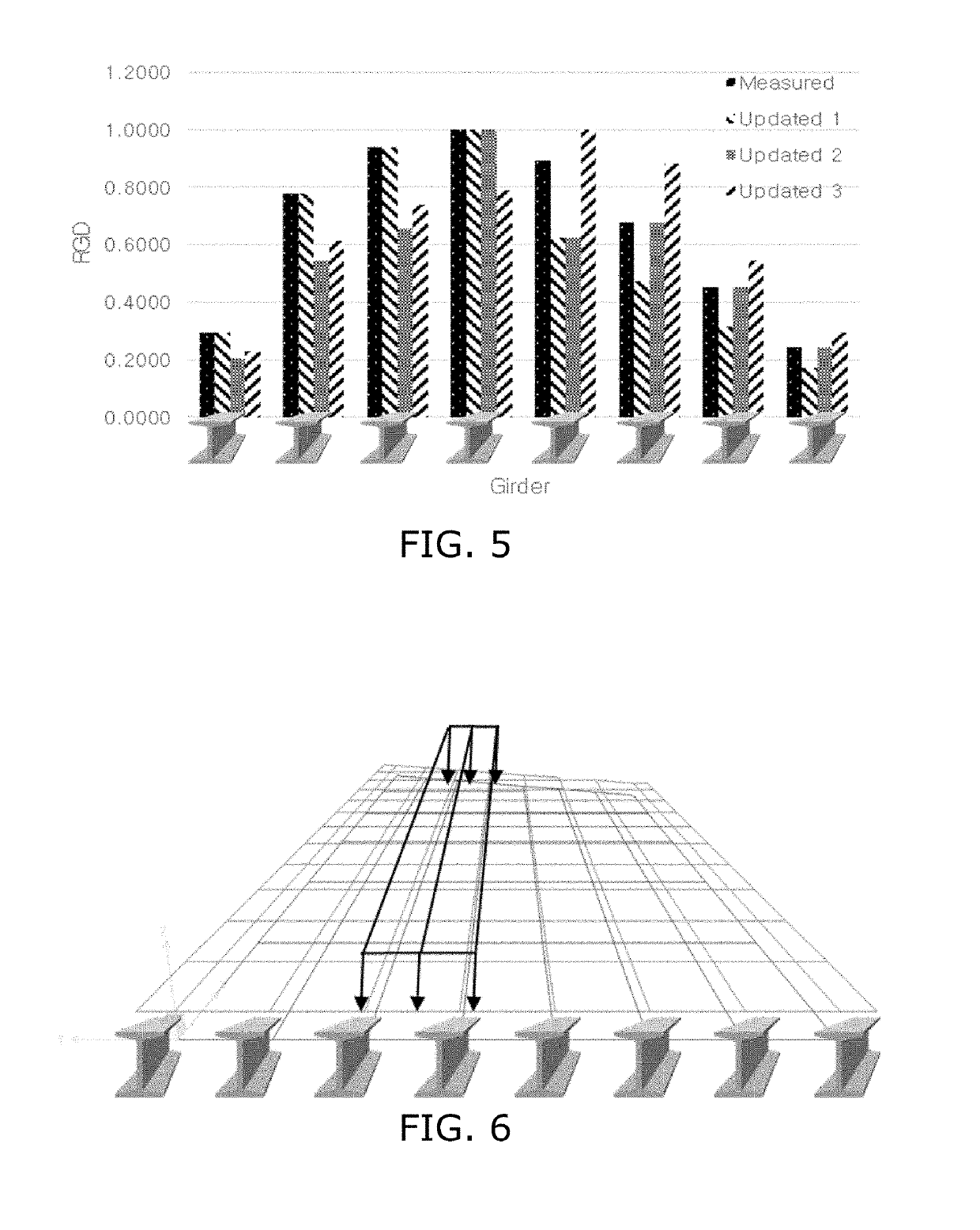Method and program for calculating stiffness coefficient of bridge by using ambient vibration test data
a technology of ambient vibration and test data, applied in bridges, bridge structural details, instruments, etc., can solve the problem of inaccurately taking into account the actual shape of girders measured
- Summary
- Abstract
- Description
- Claims
- Application Information
AI Technical Summary
Benefits of technology
Problems solved by technology
Method used
Image
Examples
Embodiment Construction
[0030]The present invention will be described in detail below with reference to the accompanying drawings. However, the present invention is not limited or restricted to exemplary embodiments. The same reference symbols that are presented in the individual drawings denote the members that perform substantially the same function.
[0031]The objects and effects of the present invention will be naturally understood or made clearer by the following description, and the objects and effects of the present invention are not limited merely by the following description. Furthermore, in the following description of the present invention, when it is determined that a detailed description of a well-known technology related to the present invention may unnecessarily make the gist of the present invention obscure, the detailed description will be omitted.
[0032]FIG. 1 shows the individual steps of a method of calculating the stiffness coefficient of a bridge according to an embodiment of the present...
PUM
 Login to View More
Login to View More Abstract
Description
Claims
Application Information
 Login to View More
Login to View More - R&D
- Intellectual Property
- Life Sciences
- Materials
- Tech Scout
- Unparalleled Data Quality
- Higher Quality Content
- 60% Fewer Hallucinations
Browse by: Latest US Patents, China's latest patents, Technical Efficacy Thesaurus, Application Domain, Technology Topic, Popular Technical Reports.
© 2025 PatSnap. All rights reserved.Legal|Privacy policy|Modern Slavery Act Transparency Statement|Sitemap|About US| Contact US: help@patsnap.com



